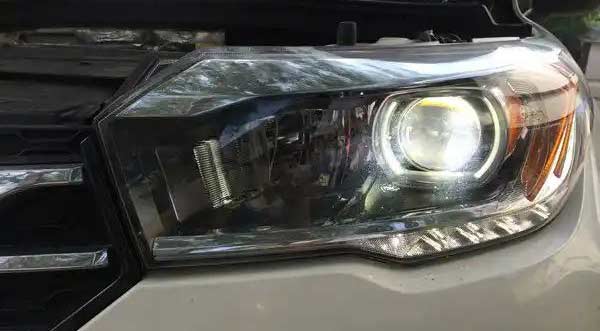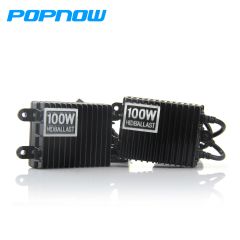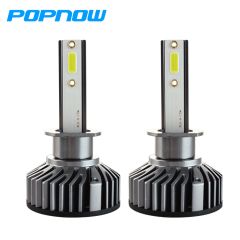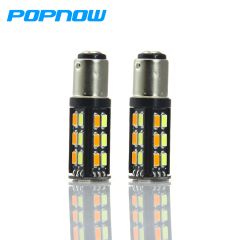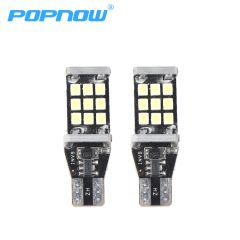They say the eyes are the windows to the soul. For a car, having a pair of beautiful headlights is like having a pair of beautiful eyes. The emergence of LED headlights is like adding "cosmetic contact lenses" to the headlights, which directly increases the charm index of the "eyes" by a level, and its functions are also changing with each passing day. I think it's time to take a good look at LED headlights.
It is the abbreviation of light-emitting diode, and it has a very popular name - LED. Today, they often appear as indicator lights and backlights for light boxes, signboards and various electrical appliances. They are also an important part of car taillights, high-mounted brake lights and daytime running lights.
What are the advantages of LED headlights?
Since we are talking about LED, let’s first talk about why it is so hot now. As we all know, there are no more than two types of headlights on cars: halogen headlights and HID xenon headlights. What are the advantages of emerging LED headlights compared with these two mainstream headlights?
For cars, LED headlight sources have the following advantages:
1. Energy saving and low cost:
LED has high luminous efficiency, almost twice that of fluorescent lamps. If we take the energy-saving lamps we use daily as an analogy, energy-saving lamps are 4/5 more energy-saving than incandescent lamps, while LEDs are 1/4 more energy-saving than energy-saving lamps. In cars, for the same daytime running lights, the energy consumption of LED components is only 1/20 of that of halogen lights. The cost of LED components (Check Transaction Price | Participation | Preferential Policies) has also been significantly reduced year by year, and costs and prices are still falling at a rate of more than 20% per year.
2. Long service life.
Currently, the LED components used in cars can basically reach the level of 50,000 hours, and well-known automotive lighting suppliers (check transaction price | participation | preferential policies) can already provide LED components with a service life of 100,000 hours , equivalent to 11 years. In comparison, the life of a xenon lamp is only about 3,000 hours.
3. Good durability
LED components have a simple structure, excellent impact and impact resistance, are not easily broken, and can adapt well to various environments.
4. LED components are small and compact, convenient for layout and styling design:
This is a huge advantage of LED, which fully caters to the evolutionary requirements of automobile manufacturers in design, breaks the constraints of past lighting systems on styling innovation, and allows us to have more creative automotive products.
5. Fast response:
LED lighting only takes microseconds and can be used to quickly light up taillights and turn signals to achieve better warning effects. Compared with xenon lamps and halogen headlights, LED lighting responds faster and better guarantees driving safety.
6. Low brightness attenuation:
LED has high brightness, and the brightness attenuation is much lower than that of halogen lamps. Suitable for lighting, brake lights, turn signals and other warning lights.
7. It can be driven by low-voltage DC, with small load, weak interference, low requirements on the use environment and good adaptability.
Unlike xenon lamps, a voltage booster is required.
●Why did LED headlights come so late?
Counting the lights, electric lights have been around for more than 150 years, and LEDs are novel in every aspect. In fact, the origin of LED can be traced back to 1907, more than 100 years ago. That year, Henry Joseph Wheel, who was engaged in the radio industry, applied a certain voltage to the silicon carbide crystal and observed a dim yellow light on the cathode, which should be regarded as the originator of the light-emitting diode.
Practical LEDs were not invented until more than 50 years ago, so this time in the 1960s is considered by many to be the real starting point of LEDs. With the continuous development of technology, the colors of LEDs are slowly expanding from the earliest red, orange, yellow, and green. Early LEDs were mainly used as light sources for various instruments and indicator lights for various equipment. Later, with the increase in colors, they began to be used in traffic lights, large displays, and car lights.
In the past, LEDs could not emit the "white light" required for headlight lighting because there is no "white light" in the visible spectrum. It is not monochromatic light, but a composite light composed of various monochromatic lights. The white light seen by the human eye requires a mixture of two wavelengths of blue light + yellow light or three wavelengths of blue light + green light + red light. Since both methods require blue light, blue LED has become an important technology node for the development of white light LED.
It was not until the end of the last century, with the successful development of ultra-high-brightness blue LEDs, that the development of white LEDs made real progress in stages. The color temperature of white LED is close to that of sunlight (Check transaction price | Preferential policies | Preferential policies), and the lighting effect is more natural and closer to the colors seen by the human eye during the day. It was also from this time that LED officially joined the lighting field.
The method of synthesizing white light from LED is the two methods mentioned earlier. At present, white LEDs are commonly made using blue LED chips + yellow phosphor powder or yellow phosphor powder filters. It is now widely used in daytime running lights and white light-emitting diodes used as headlights, which all use the same principle. The emergence of white LEDs can also be recorded in the history of the development of LCDs, making a huge contribution to improving the color performance of LCDs and promoting the popularity of LCDs
You must have noticed that many cars have actually used LED taillights since they were very young, but LED headlights have only become popular in recent years. One of the reasons is that the LEDs mentioned above cannot produce white light. Another issue is the brightness and cost of LEDs. Since LED was officially commercialized, the brightness has increased by nearly 100 times, while the price has dropped by hundreds of times. The reduction in cost and the increase in brightness have finally made LED qualified for inclusion in car headlights. The third reason is that developed countries such as North America and Europe did not have relevant standards for the use of LED headlights in automotive lighting. After 2021, SAE and ECE will successively release relevant standards.
LED headlight pioneer
●LED headlights: two “firsts”
LED headlights should be regarded as a milestone in the history of automobile development (check transaction price|participation|preferential policies). The name engraved on the milestone should undoubtedly belong to the "No. 1" of the first application of LED headlights. The first model officially equipped with LED headlights is the Lexus LS (check transaction price|participation|preferential policies) 600h/LS600hL model unveiled in 2021. Its headlights are the first LED headlights used in mass-produced models and the first commercial products of LED headlights. This headlight comes from KOITO, a Japanese automotive lighting system supplier. However, this headlight is not 100% LED headlight, but the low beam and auxiliary lighting use white LED, which is why there is another "number one" seat.
Another "number one" seat belongs to the Audi R8 (check transaction price | configuration | preferential policies), which will be launched at the end of 2021. It is equipped with a 5.2-liter V10 engine and the world's first commercial full-LED headlights. The lighting functions of its far and near lights, turn signals, and daytime running lights all use LED components. This headlight will be released in 2021. It is a later product than Otaru and was designed and developed by Automotive Lighting, a subsidiary of Magneti Marelli.
The real shot above shows the 2010 domestic R85.2FSIquattro, also equipped with full LED headlights.
Following KOITO and automotive lighting, HELLAHELLA and Valeo soon joined the LED headlight camp. Speaking of which, Hella Hella should actually appear on the LED milestone, in the same year that the Audi R8V10 version was released. Hella provides full LED headlights for the U.S. version of the Escalade Platinum 2008. They developed this headlight for 2021. According to the car's launch time, the Escalade Platinum Edition released in the summer of 2021 may be earlier than the V10 version of the Audi R8. In addition, the full-LED headlights of the fourth-generation Audi A8 that debuted at that time were also a masterpiece of Hella.
●Interpretation of LED headlight structure
The structure of LED headlights is basically the same as that of current traditional headlights, concentrating light through reflection or lens structures. The difference is that LED headlights are often composed of multiple LED components and require a control module to control the entire system.
At the same time, LED components are sensitive to temperature changes. If the junction temperature is high, the luminous performance of the LED will be reduced. Therefore, LED headlights have higher requirements for heat dissipation and require good heat dissipation design to ensure the temperature stability of the LED components. Because of this, we can see that behind the LED headlights, there are radiators and even fans behind those LED components, which are currently not available in ordinary halogen headlights and xenon lamps.
Summarize:
The era of LED headlight bulbs seems to be about to begin. Previously, only high-end models began to appear on low-priced models, such as Mondeo, new Audi A3, Golf 7, etc. It is believed that as the cost of LEDs further drops, mainstream compact cars and even small cars will get involved in the trend of LED headlights. Of course, all LED headlights will not be the end of the road for car lights. When LED headlights become popular among the people, high-end brands will definitely come up with new tricks. The fact that the "laser headlights" and "organic light-emitting diode" lights are already on the move is an obvious sign, isn't it?

